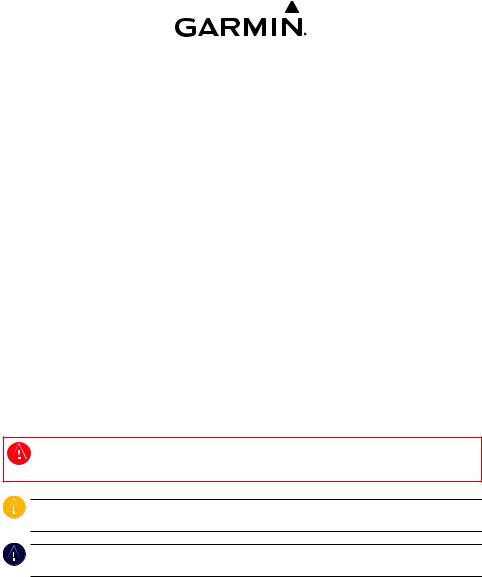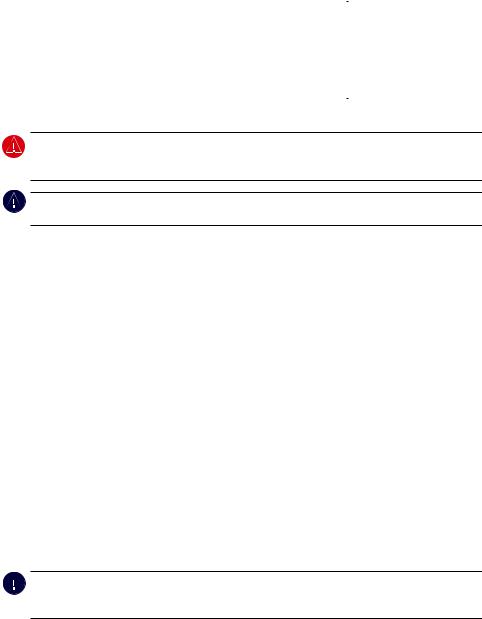Garmin GFL 10 User Manual

GFL™ 10 Installation and Configuration Instructions
Use the Garmin® GFL10 adapter to adapt analog information provided by a fluid-level sensor on your boat to your NMEA2000® network.The GFL10 adapter allows you to observe fluid-level information on compatible Garmin display devices connected to your NMEA2000 network. For a list of compatible Garmin chartplotters and devices, visit www.garmin.com.
Compare the contents of this package with the packing list on the box. If any pieces are missing, contact your Garmin dealer immediately.
Product Registration
Help us better support you by completing our online registration today. Go to http://my.garmin
.com. Keep the original sales receipt, or a photocopy, in a safe place.
Contact Garmin
Contact Garmin Product Support if you have any questions while using your GFL10 adapter. In the USA, go to www.garmin.com/support, or contact Garmin USAby phone at (913) 397.8200 or (800) 800.1020.
In the UK, contact Garmin (Europe) Ltd. by phone at 0808 2380000.
In Europe, go to www.garmin.com/support and click Contact Support for in-country support information, or contact Garmin (Europe) Ltd. by phone at +44 (0) 870.8501241.
See the Important Safety and Product Information guide in the compatible Garmin display device box for product warnings and other important information.
caution: Always wear safety goggles, ear protection, and a dust mask when drilling, cutting, or sanding.
notice: When drilling or cutting, always check the opposite side of the drilling or cutting surface.
Needed Tools and Supplies
•Heat-shrink tubing and a heat gun
•Cable ties
•Additional NMEA2000 cabling and connectors (optional)
July 2009 |
190-01081-06 Rev. A |
Printed in Taiwan |

Determining an Installation Location
When you are selecting a location to install the GFL10 adapter, consider the following:
•During installation, you connect the GFL10 adapter to the analog gauge (or directly to the fluid-level sensor), and to the NMEA2000 network.Therefore:
◦Choose a location that is within 173 in. (4.4 m) of the analog gauge (or the fluid-level sensor) to avoid splicing bare wires.
◦Choose a location between the NMEA2000 backbone and the analog gauge (or the fluidlevel sensor).
◦If you cannot connect the adapter directly to the NMEA 2000 network, add a drop cable. See page 3 for more information.
•The adapter is IEC 60529 IPX7 waterproof, and can be submerged up to 30 minutes at 1 meter. Do not install the adapter in a location where it will be submerged regularly, though the location can be subject to wash-down.
•You can use cable ties (not included) to secure the adapter to an existing structure on your boat.
•You can use mounted-head cable ties (not included) and screws (not included) to secure the adapter to a bulkhead or other suitable surface on your boat.
•Install the adapter at least 2 in. (5 cm) from a magnetic compass to prevent electromagnetic interference, which can cause inaccurate compass readings.
Wiring the GFL 10 Adapter
Connect the GFL10 adapter either to an analog gauge or to the sender directly using the bare wires on the wiring harness.
Wiring the GFL 10 Adapter to an Analog Gauge
If your boat has an analog gauge representing the fluid level, you can wire the GFL10 adapter directly to the gauge. Consult the owner’s manual provided by your boat or sensor manufacturer to determine the ground, sensor, and power (ignition) connections on the gauge.Typically,
the power (ignition) connector is labeled with a “+”, a “+12V”, an “I”, or an “IGN” marking. The ground connector is typically labeled with a “-”, a “ ”, or a “G” marking, and the sensor connector is typically labeled with an “S” or a “G” marking. Do not remove any wires from the back of the gauge, and wire the GFL10 adapter to the gauge according to the following table.
”, or a “G” marking, and the sensor connector is typically labeled with an “S” or a “G” marking. Do not remove any wires from the back of the gauge, and wire the GFL10 adapter to the gauge according to the following table.
Wiring the GFL 10 Adapter Directly to a Fluid-Level Sensor
If your boat does not have an analog gauge representing the fluid level, you can wire the adapter directly to the fluid-level sensor. Consult the owner’s manual provided by your boat or sensor manufacturer to determine the sending and ground terminals on the sensor.Typically, the sending terminal is labeled with an “S” marking for sensor or a “G” marking for gauge, and the ground terminal is typically labeled with a negative sign (-).Wire the GFL10 adapter to the sensor according to the following table.
|
GFL 10 Installation and Configuration Instructions |

Connection Type |
Wire Color |
Gauge or Sensor Terminal |
|||
Analog Gauge |
Blue |
Sensor (S, G) |
|||
|
White |
Gauge power (+, +12V, I, IGN) |
|||
|
Yellow |
Unused |
|||
|
Black |
Ground (-, |
|
|
, G) |
|
|
|
|||
|
|
|
|
|
|
|
Red |
Unused |
|||
Resistive Sensor |
Blue |
Sensor (S, G) |
|||
|
White |
Unused |
|||
|
Yellow |
Unused |
|||
|
Black |
Ground (-, |
|
, G) |
|
|
|
|
|||
|
|
|
|
|
|
|
Red |
Unused |
|||
Warning: When connecting the GFL10 adapter directly to the sensor on a fuel tank, make the connection to the sender on the tank before connecting the adapter to the NMEA2000 network. This will reduce the risk of sparks near the fuel tank.
Notice: After connecting the adapter to the gauge or sensor, cover any exposed wires with heatshrink tubing.
Connecting the GFL 10 Adapter to a NMEA 2000 Network
After you have connected the GFL10 adapter to the analog gauge or to the sender, connect it to the existing NMEA2000 network on your boat. If you do not have a NMEA2000 network on your boat, you must build one. For more information on NMEA2000 and to purchase additional connectors and cables, go to www.garmin.com.
To connect the GFL 10 adapter to your existing NMEA 2000 network:
1.Determine where to connect the GFL 10 adapter to your existing NMEA 2000 backbone.
2.Disconnect one side of a NMEA 2000 T-connector from the backbone. To extend the NMEA 2000 backbone, connect a NMEA 2000 backbone extension cable to the side of the disconnected T connector.
3.Add the included T connector for the GFL 10 adapter to the NMEA 2000 backbone by connecting it to the side of the disconnected T connector.
4.Connect the NMEA 2000 connector on the GFL 10 adapter to the T-connector added in step 3.
5.(Optional) If the GFL 10 adapter cannot connect directly to the NMEA 2000 backbone, route a NMEA 2000 drop cable (not included) to the bottom of the T connector added in step 3. Use a drop cable with a length up to 20 ft. (6 m). Connect the drop cable to the T connector and to the NMEA 2000 connector on the GFL 10 adapter.
Notice: If you have an existing NMEA2000 network on your boat, it should already be connected to power. Do not connect an additional NMEA2000 power cable to an existing NMEA 2000 network, because only one power source should be connected to a NMEA2000 network.
GFL 10 Installation and Configuration Instructions |
|
